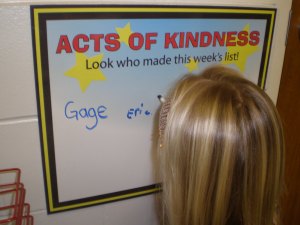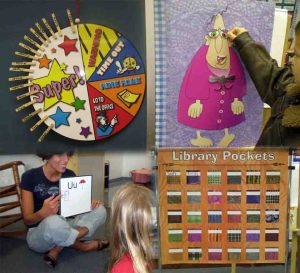Having high expectations for students, I know from experience, always results in higher achievement. However, the expectations and goals need to be different for each student. There are usually groups of students who can achieve the same high goals, but having one high expectation for all students can sometimes leave other students feeling like failures. The key is to have different goals in various subject areas for each student. Knowing all students can learn is a MUST in order for teachers to move forward in helping each student to improve. This knowledge needs to be brought to forefront of your consciousness by staying aware of your words and thoughts, even out of the classroom. I’ve heard educators who claimed to know all students can learn, but then would utter the word “He can’t learn anything” while eating lunch in the teacher’s lounge. Some teachers indicate that a whole class was impossible to teach. We have all had students who seem like they don’t understand a concept, no matter how many different ways we introduce it to them, and then suddenly they walk in one day and POOF – they get it! If the teacher had considered it too difficult, or had given up before trying a different strategy, the light may not ever have switched on for that student. How do we communicate our high expectations to students? Here are strategies used successfully:
1. Tell the students your expectations for the whole group and then individually pull them aside to explain individual goals.
2. Find out as much as you can about their interests by taking surveys and asking questions. Teaching students using their interests is one of the best ways to break through any intellectual block they have had in academics or behavior. For example, if a student loves boats, use boats in math examples, boat books or magazines for reading, and let them write about boats.
3. Communicate your expectations to the parents in newsletters or parent conferences. They can give you great insight to what the student’s interest levels are as well.
4. Provide opportunities for students to work in groups to make discoveries. Don’t answer questions, but instead lead them to make their own discoveries by asking questions and communicating to them that you know someone in their group will find the answer. This may seem difficult the first few attempts, but once they get the hang of working together to get answers without the teacher, they will be hooked and not depend so much on adults for the answer. This is our main goal as educators. To create a learning environment where students are independent learners and teachers only play the role of facilitating, leading and inspiring.
5. Provide specific verbal encouragement all day. For example, “Johnny, I knew you could solve that math problem. Can you share what you found with the rest of the class?” Students love to know they did something well and share with others. Once you share an accomplishment with the class, you’ll notice the rest of the class will follow suit and even try to do better than the example you shared.
6. If your goal for a student is a behavior issue, use signed contracts with the student stating your mutual expectations. If necessary, attach it to their desk for daily review. The contract should state what the expectation is, how the student can achieve it, and what they will receive when accomplished. You don’t need to give candy etc… but it is helpful to let the student choose their reward. The reward system should be gradually removed once the student consistently demonstrates a pattern of the expected behavior.
Sponsor: Cash for Creations, Inc. – Educational Visual Aids
www.cashforcreations.com


